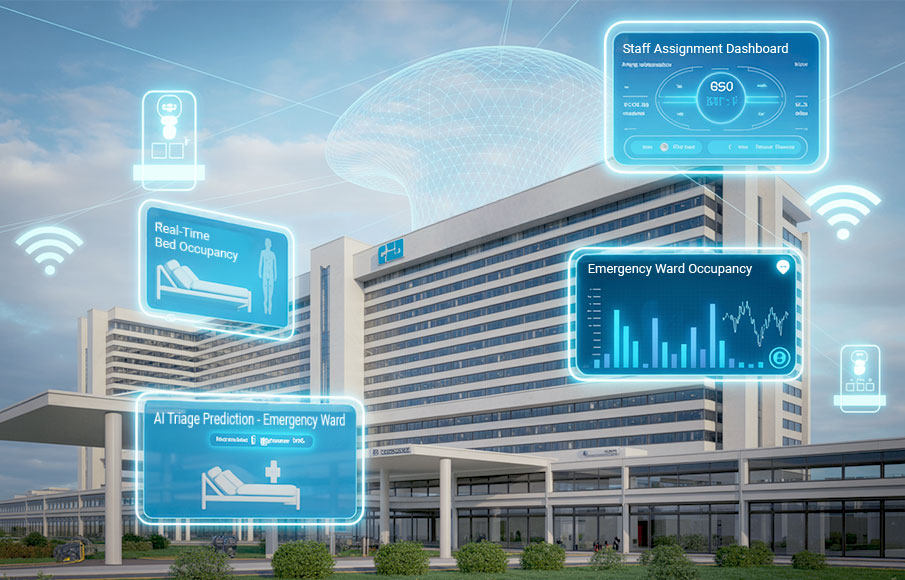Enabling True NaaS with SD-WAN and SDN
- 07 January 2021

The pandemic has catalysed digital transformation in almost every sector one can imagine. Organisations had to quickly rollout measures to adapt to new working arrangements, as well as challenges, opportunities and new demands triggered by the impact of COVID-19.
In the latest report by Google, Temasek and Bain & Company, Southeast Asia’s digital economy is set to hit US$100 billion by the end of 2020 and continue growing to over US$300 billion by 2025. The report also highlighted the growing adoption of HealthTech and EdTech in Singapore, in addition to the burgeoning e-commerce sector. Though they are still deemed nascent, these sectors are expected to propel innovation due to the fast growing funding in these sectors.
Another area that’s set for greater growth is manufacturing. Recently, Deputy Prime Minister Heng Swee Keat said that Singapore committed to developing cutting-edge capabilities in advanced manufacturing as a way to create new jobs and training opportunities amidst the pandemic. He added that the future of manufacturing will be driven by the convergence of digital and other emerging technologies, such as the Internet of Things, artificial intelligence, robotics and additive manufacturing.
These mean that businesses will find it increasingly tough to use existing or legacy infrastructures to cater to the growth demands and the deployment of emerging technologies.
Businesses must be prepared to review their network infrastructure and ensure reliable and uninterrupted uptime in connectivity to deliver seamless customer or user experience, or ensure their data-powered production line is not interrupted due to poor network quality.
This makes a strong case for Network-as-a-Service (NaaS) solutions as they offer businesses a myriad of benefits, including reduced costs, enhanced security, improved quality of service, optimised performance and productivity, proactive maintenance and many more.
To better understand how we can enable a truly-optimised NaaS solution, businesses must first understand that the solution is brought about through the use of software-defined network (SDN) and software-defined wide-area networking (SD-WAN).
SDN is a network architecture owned by the telco operator that enables the network to be controlled centrally and intelligently, or ‘programmed,’ using software applications.
SD-WAN, on the other hand, is a device that sits within the organisation which replaces traditional branch routers to control application-level policies and offers a full view of network performance and connected circuits. This simplifies the set-up and management of branches within the corporate network.
When combined, both tools work together to empower businesses to make decisions and optimise their network in real-time with insights, control and agility.
Different but complementary: SD-WAN and SDN
It’s apt to say that CIOs and IT Managers’ jobs just got even harder in 2020 as they need to ensure organisations’ IT infrastructure and network bandwidth are able to support remote working arrangements and companies’ rapid digitalisation efforts. With data coming from various sources, SD-WAN offers them visibility of their companies’ network and allows them to set policies and priortitise network traffic to more mission-critical functions. SD-WAN offers more in-depth view of the company’s network performance and activity, including those in branch offices.
However, having a clear view of network activities, traffic and performance alone is not sufficient. CIOs and IT Managers need to be able to take necessary actions to ensure network performance is optimised for different applications and job functions. For instance, poor network connectivity or lagging is not a situation companies can afford for data-driven technologies such as IoT, AI and machine learning, as it may disrupt services and production line.
This is where SDN comes in. It is a programmable network that allows companies to push network requirement changes virtually according to the needs of various applications, enabling real-time responsiveness. It allows operations to be more agile, helping them address network issues and bottlenecks faster. It also enables self-healing with AI to reroute traffic to critical applications before issues arise thus improving network stability and reliability for the end users.
SPTel’s SDN customer portal can be integrated with the SDWAN customer portal to enable IT managers to have a holistic view on network health, while giving them the ability to take necessary actions on the fly, making changes as required. It also improves the total cost of ownership because businesses can now perform dynamic resource allocation, increasing bandwidth or cybersecurity as needed, paying for what they need, when they need it.
How to future-proof your network
Digitalisation is not a one-off exercise as more applications and technologies will be deployed to meet the changing business landscapes, demands and shifts in the industry. Hence it is crucial for companies to deploy true network-as-a-service needs to incorporate both SDN and SD-WAN as a way to future-proof their network capabilities.
At SPTel, combining the best of both technologies allows us to help accelerate digitalisation for our customers. As the only company that offers true end-to-end virtualisation across all network functions as well as network diversity, businesses can rest assured that they can customise their network to meet their needs.
If you aren’t convinced yet, below are some trends taking place right now that will underpin the need for NaaS to take your business into the 21st century:
- With the ongoing shift from hardware to software, businesses are looking for solutions that will support their move away from physical hardware on their premises and the same will happen to networks.
- Digitalisation means there is less predictability around network traffic, so having oversight over the ongoing traffic is key to act timely should there be a surge.
- The downside to the “digital-first” era is that cyber threats are on the rise in parallel. As such, having clear visibility over the network is key to protect and react swiftly.
- Through virtualizing your network, you get a clear overview of the cost and usage. You can finally answer the question “am I paying too much?” with clear data.
To find out more about what SPTel can offer you and how network virtualisation could be the right tool for you, click here.












